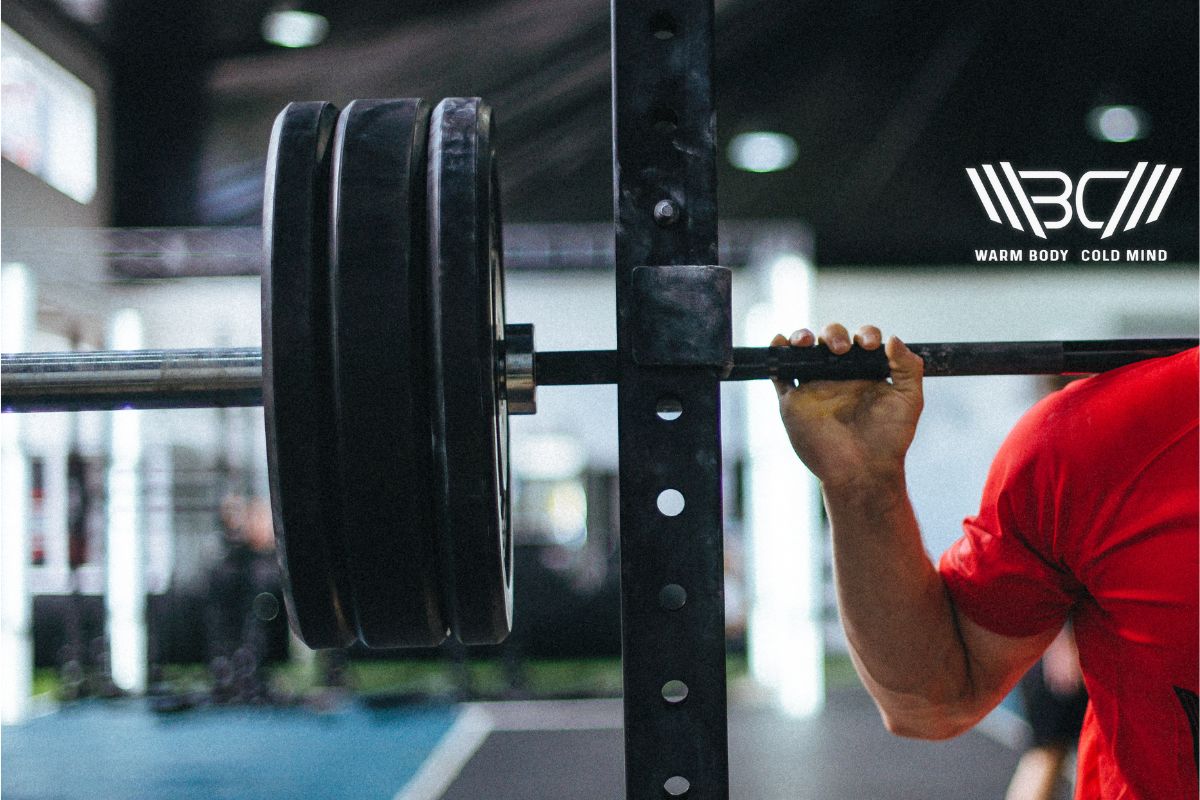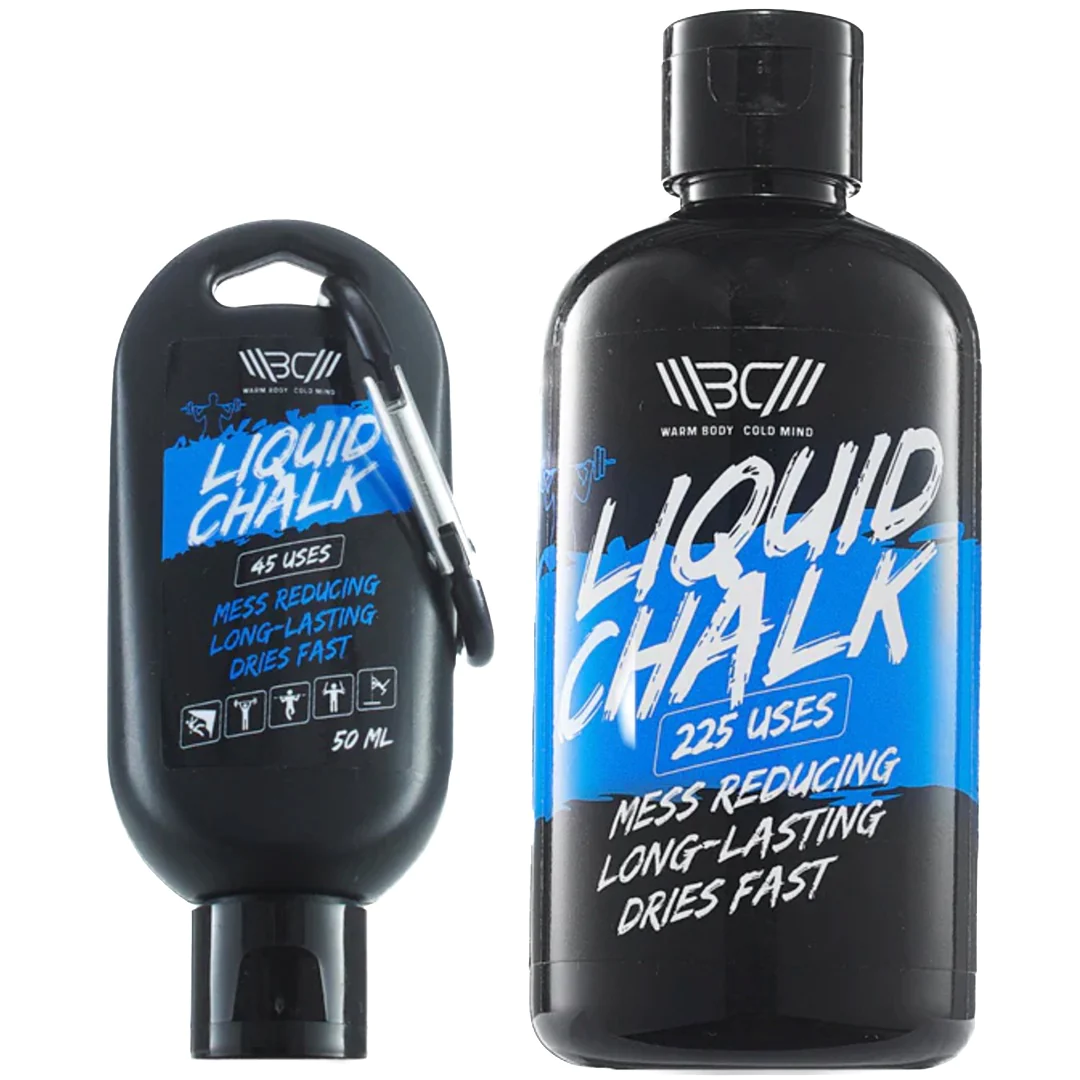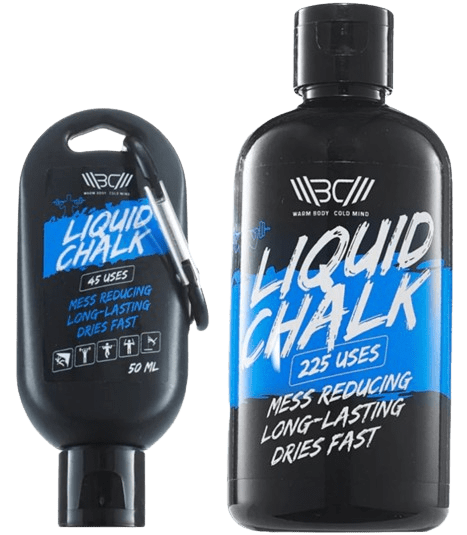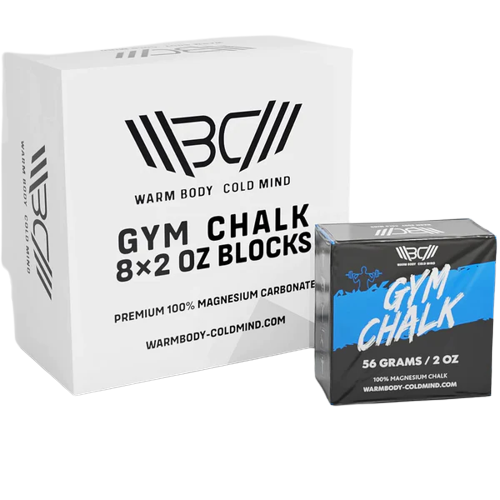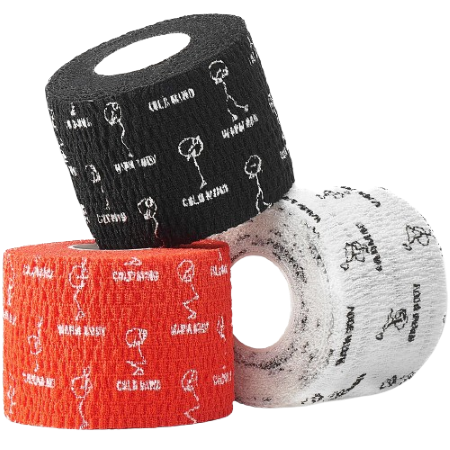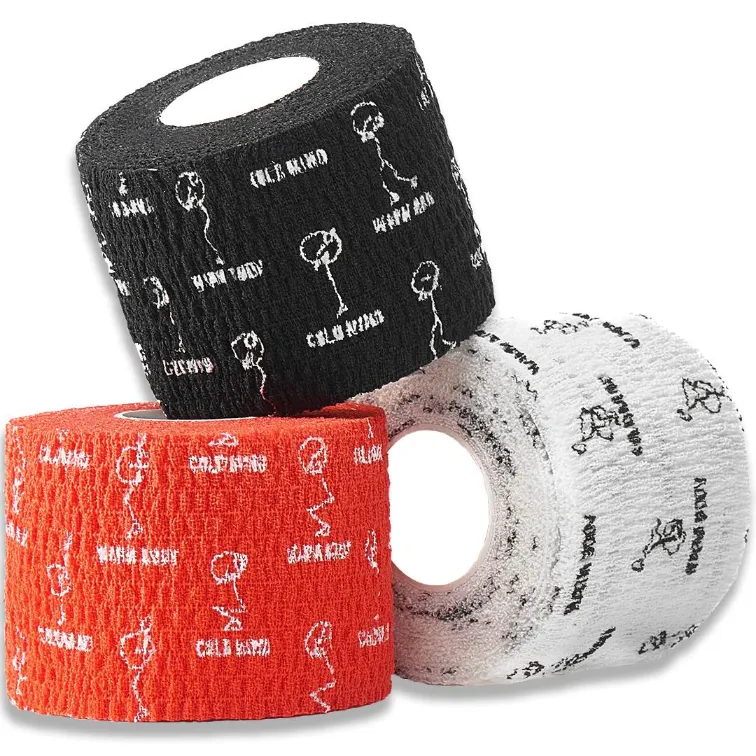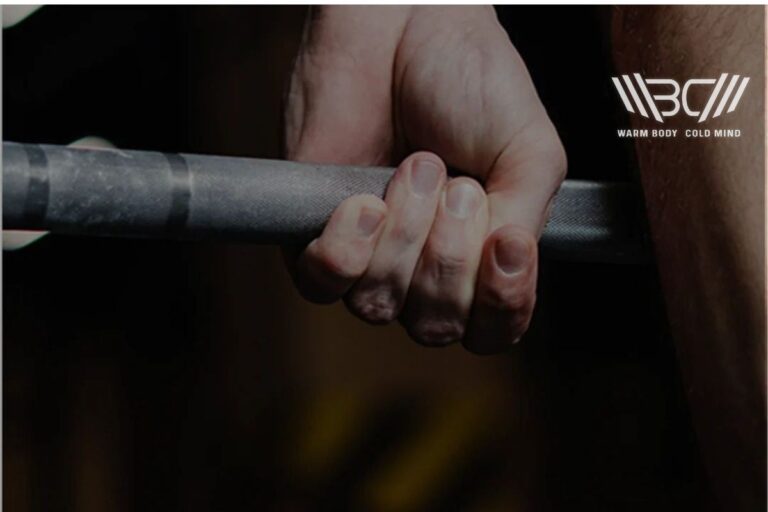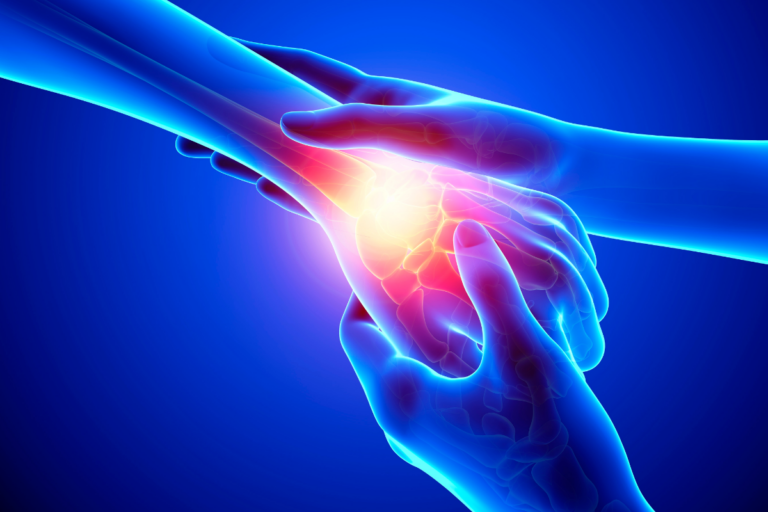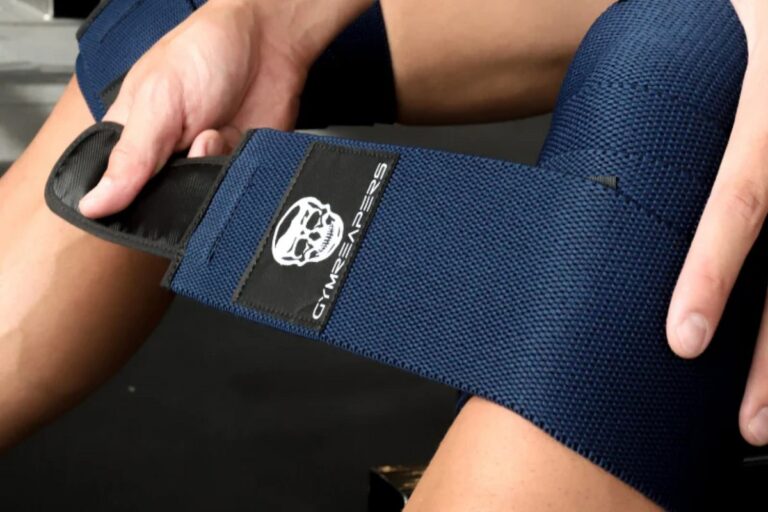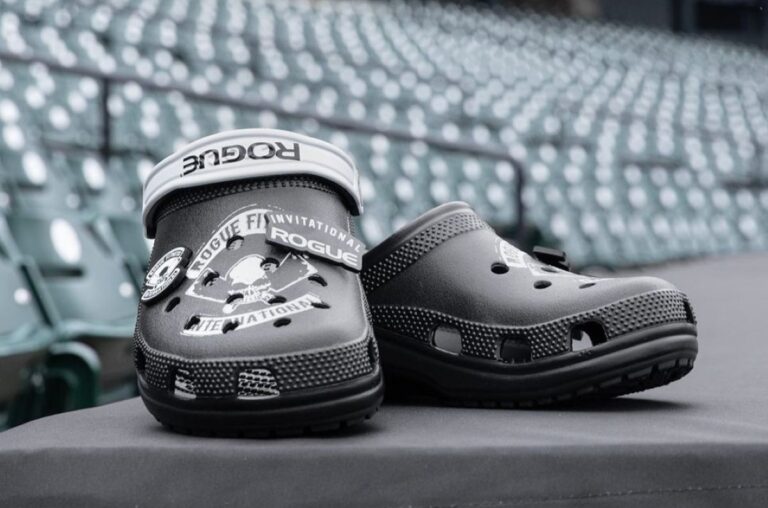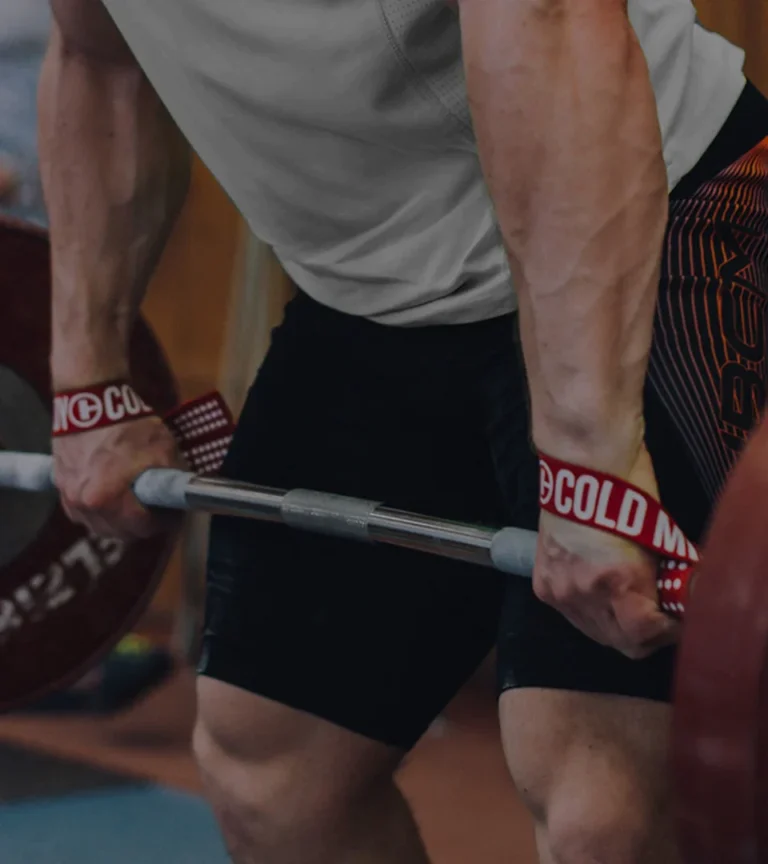How To Beat Weightlifting Calluses
Noticing calluses from lifting weights? Good, it means you’re putting in effort. A callus from lifting heavy is a normal occurrence and managing it properly can toughen your skin in the long run.
In this article, we’ll explain how Warm Body Cold Mind athletes deal with weightlifting calluses. These are straightforward tips you can start applying today, but there are clear dos and don’ts.
Weightlifting calluses are unavoidable but manageable. Treat them early to avoid tears by soaking your palms in warm water and using a callus remover or pumice stone to smoothen them out. Equipment such as gloves, hand chalk, and lifting tape can help minimize calluses from lifting weights.
What Causes Calluses From Lifting?
First, some anatomy 101. Calluses form when repeat pressure and friction are applied to the outer layer of the skin, known as the Epidermis. The Epidermis is made up of four different cells, but 90% of them are Keratinocytes.
Keratinocytes produce Keratin, which is a protein essential for the development of skin, nails, and hair. Gradeschool biology taught us that our skin undergoes constant replenishment. As new skin cells form, they get fed Keratin through a process called keratinization.
When skin undergoes an abnormal amount of pressure, it triggers a physiological response known as Hyperkeratosis. Hyperkeratosis essentially kicks keratin production into overdrive, rapidly increasing the number of new skin cells produced and pushing the dead ones to the top to act as a protective barrier, forming calluses.
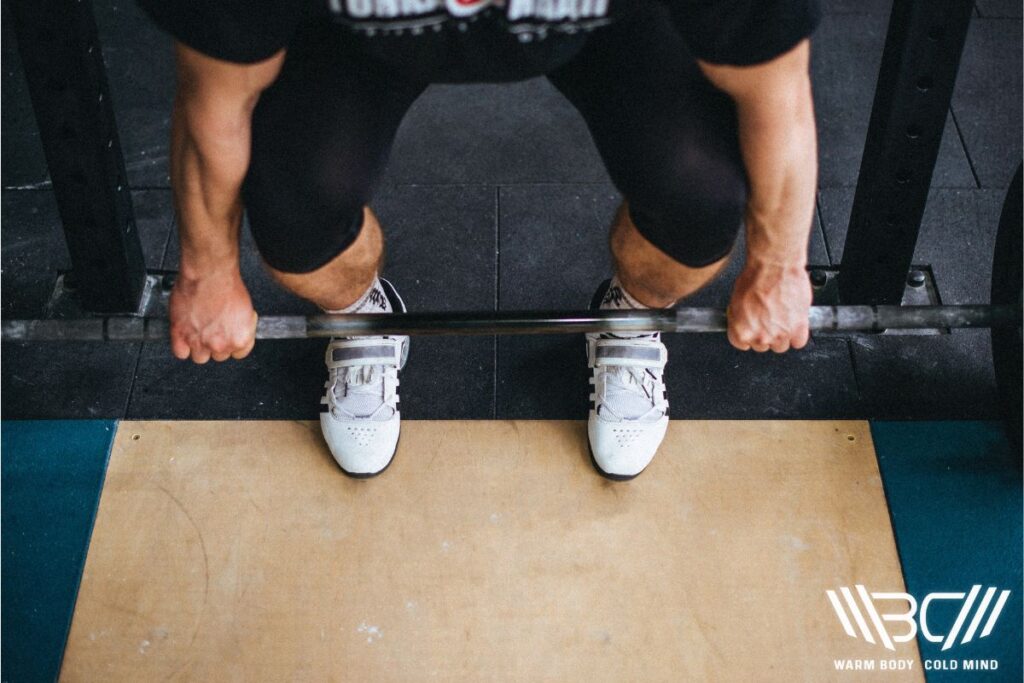
So, in simple terms, calluses are lumped-up dead skin cells. They appear off-white in color and are rough to the touch, but are generally painless. Common places for forming a callus on your hand from working out include the base of the fingers, surrounding finger joints, and below the thumb.
It’s important to differentiate them from blisters, which are fluid-filled sacs that feel bloated and are typically quite painful to touch. Here are some common causes of calluses from lifting weights:
1. Tight Gripping
Arguably the most common reason why people get calluses from working out is gripping tightly onto the equipment. It’s a natural reaction to squeeze our grip even tighter on an object we find heavy. However, the tighter we squeeze, the more pressure is applied to our palm skin. Add to that some exercise friction, such as the barbell rolling in our palms, and it’s easy to see why calluses happen from tight gripping.

Maximize your grip with premium quick-drying Warm Body Cold Mind liquid chalk leaving no mess.
2. Repetitive Squeezing
Calluses don’t form just from lifting heavy, per se. Even if you’re exercising with weight well within your manageable range, multiple repetitions and constant grip readjustment still cause friction between the skin and gripped object, whether it be a barbell, dumbbell, pull-up bar, etc. Over time, this friction can slowly but surely build up calluses.
3. Abrasive Equipment
Sometimes, the fault lies in the equipment. Gripping onto a textured surface or rough material can easily cause skin irritation. For example, barbell knurling, especially on a new barbell, can be quite abrasive, especially to sensitive skin. If that’s the case, it’s especially important to protect your hands.
How To Prevent Calluses From Lifting?
So, how to prevent calluses on hands from occurring when weightlifting? The dirty truth is that no matter how much you protect your skin, you can’t completely avoid damaging it. However, here are some tips that can drastically reduce their occurrence:
1. Relax Your Grip
Don’t squeeze too hard when you don’t have to. For example, when I do lightweight rows or lat pulldowns, I barely even squeeze the handle. If you’re targeting the correct muscles, you won’t have to rely on grip muscles too much to transfer force.
2. Use Protective Gear
One of the ways to protect your skin against calluses is by using weightlifting gloves. A good pair of lifting gloves is specifically fit with padding around common areas for callus formation. Also, they’re easy to use. However, many people find gloves to be overkill, which is fine. Indeed, you don’t always need that type of padding, and exposing your skin is a natural way to toughen it in the long run.
A lot of calluses come from the grip slipping, which is why many lifters simply use hand chalk. Whether block or liquid, lifting chalk keeps the palms dry, reducing grip friction. This naturally improves the grip, minimizing calluses. Many people prefer liquid chalk over blocks. It doesn’t leave behind powder and is easy to carry and store since it comes bottled.
If that sounds good, check out our product – Warm Body Cold Mind Liquid Chalk. It’s easy to apply, takes no more than 15 seconds to dry, and works excellently for all kinds of activities (weightlifting, calisthenics, climbing, etc.). It comes in a travel-friendly 50ml bottle, good for about 45-50 uses, or the big 250ml bottle, with about 225-250 uses.
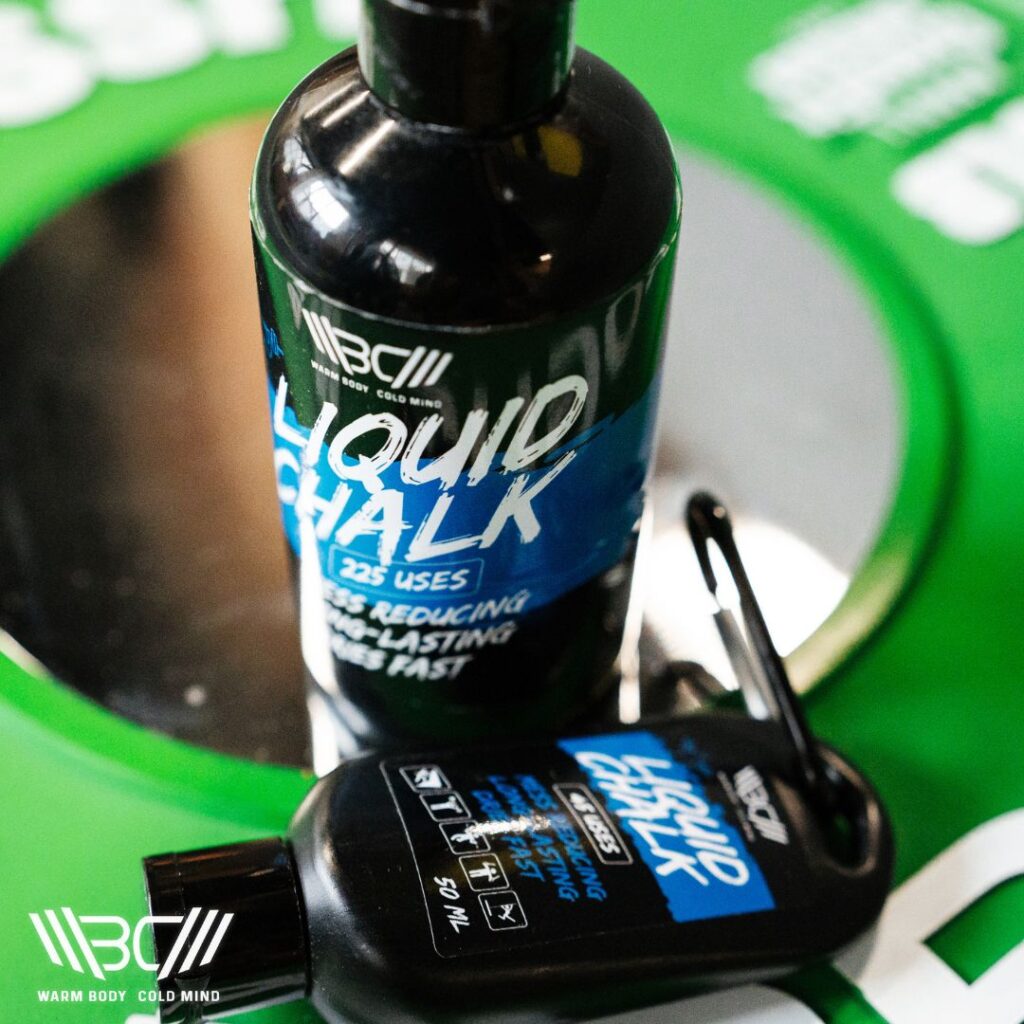
Blocks of powdered chalk are also popular among weightlifters, but they’re often banned in public gyms due to the mess they leave behind. That said, if you don’t mind the mess (for example, you have a home gym), powdered chalk works fine, too. Comparatively, it’s much more affordable than liquid chalk. The price of one block is low, the bulk price is even lower, and one block is good for hundreds of uses.
If you’re interested in powdered chalk, Warm Body Cold Mind Block Chalk has your back here as well. Our block chalk is made of 100% Magnesium Carbonate and is perfectly skin-safe. It’s sold in single blocks or packs of eight. If you’re unsure, we recommend you get the one first. If you like it, know that you can get eight for barely double the price.
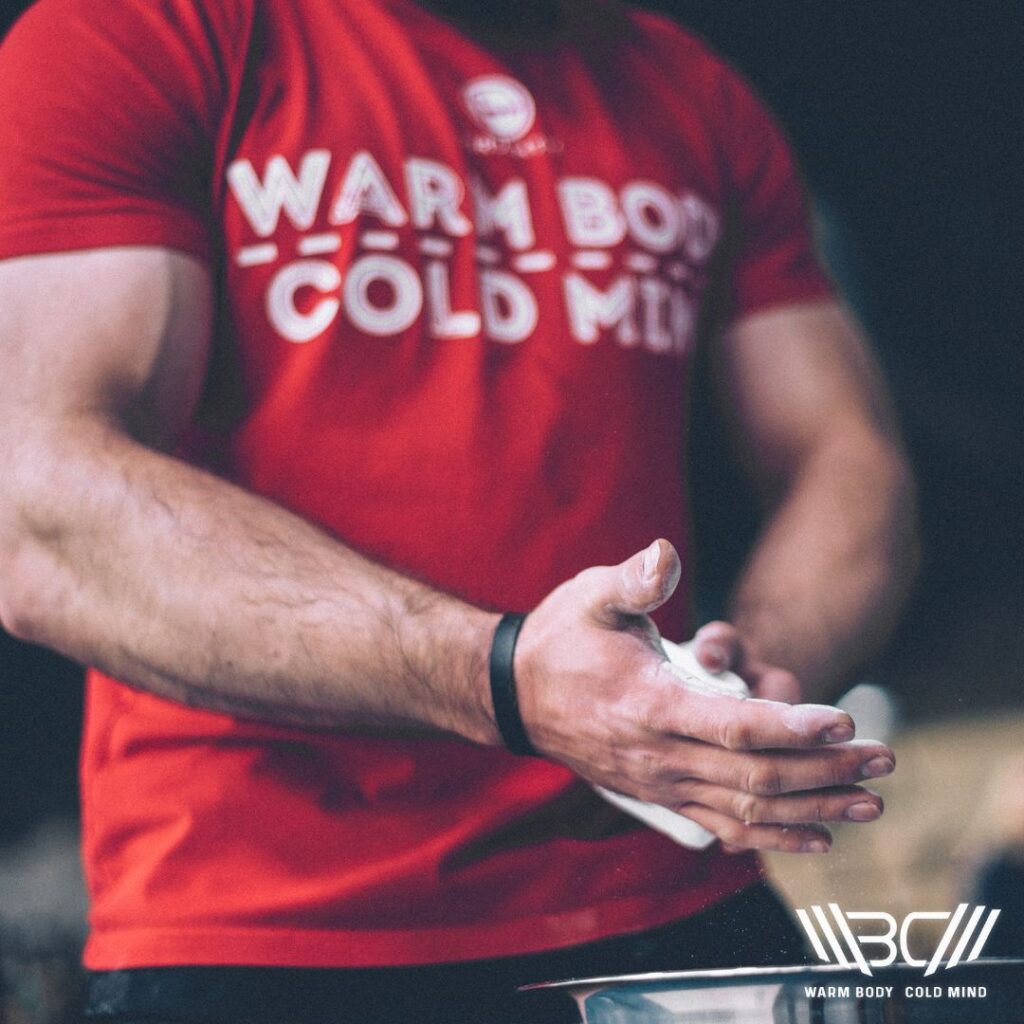
Some athletes prefer using the Hook Grip, especially for heavy deadlifts. For those unfamiliar, the Hook Grip is a gripping technique that involves tucking your thumb underneath your index and middle finger. That way, the grip becomes even more closed and secure.
However, if you use a Hook Grip, you’ll likely experience calluses forming on your thumb. If that’s the case, get yourself some thumb tape. Simply wrap it around your thumb before the workout and you’ll notice the difference in friction immediately.
If thumb calluses sound familiar, Warm Body Cold Mind Lifting Thumb Tape can help. It’s made from 100% cotton, so it’s completely skin-friendly. The adhesive is strong but doesn’t leave behind residue. There are 6 color options and 3 color mixes to choose from. Thumb tape is also very affordable considering a single piece can last hundreds of uses depending on your hand size.
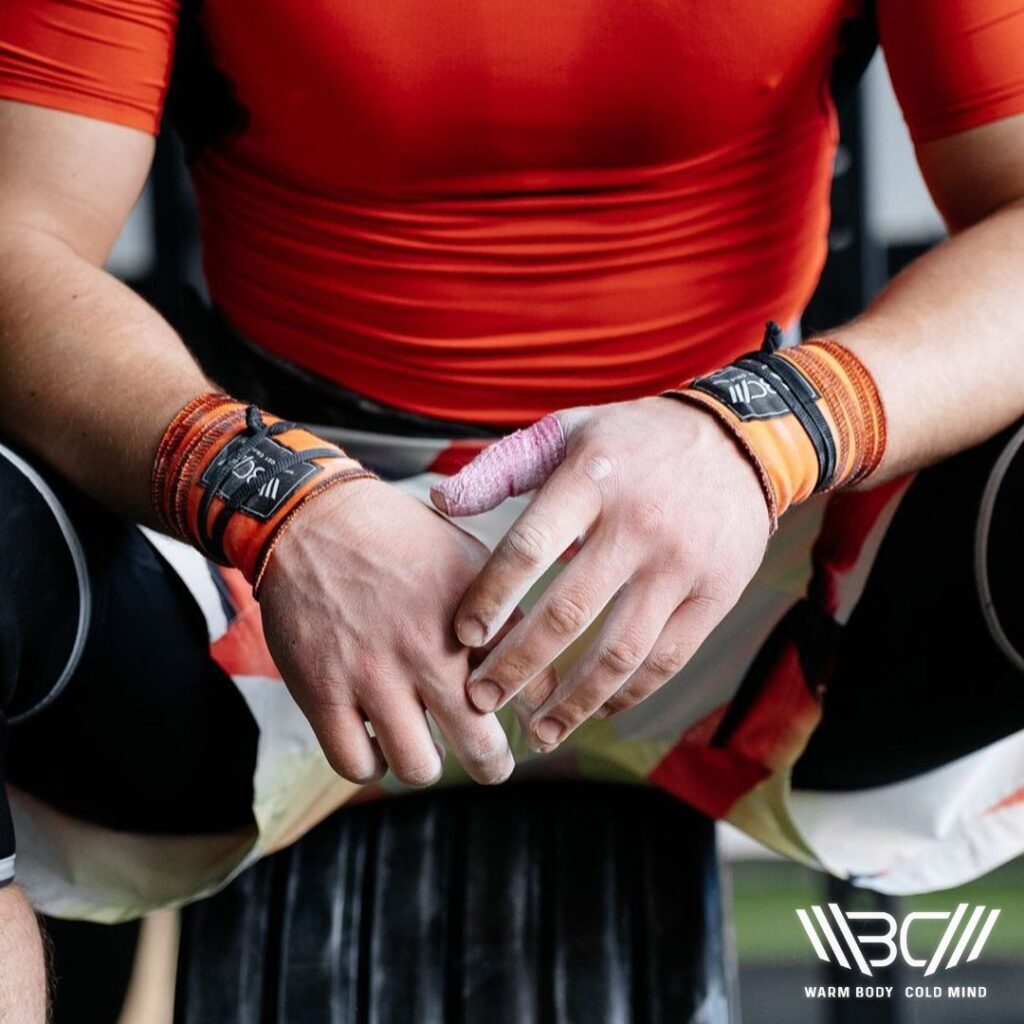
3. Take Care Of Your Skin
A wise man once said that the best cure is prevention. You can use all the protective gear in the world, if your skin is generally unhealthy, you’re going to have problems. So, take care of your skin outside the gym. Remember to wash, clean, and then hydrate, dry skin is prone to cracking and peeling.
Subscribe!
The latest reviews of must-have home gym training equipment, apparel, and supplements that will enhance your performance and bring you new results.
How To Treat Weightlifting Calluses?
So, you’ve gone through the necessary steps to protect your skin but, as warned, eventually it gave in. Not to worry, here’s how to treat calluses on hands from weightlifting to avoid further problems with them:
1. Don’t Pick On It
So far, we’ve established that calluses from working out are a normal occurrence and nothing to be scared or concerned about. But that doesn’t mean they will sort themselves out if we ignore them. Naturally, calluses become bigger the more we reapply pressure to the same skin area.
If you notice a small callus from lifting start to form, continue to work out but pay close attention to it. It may be tempting to pick on it or peel off the dead skin, but try to avoid irritating it further. Check how it looks and feels after each set. If you feel pain and discomfort or notice it’s starting to rip, stop working out until you’ve dealt with it.
What To Do When a Callus Rips During Lifting?
So, you noticed a callus on your hand has ripped open, what now? If you address it promptly, it’s still nothing to worry about. Firstly, stop the workout you’re doing. If you have antibacterial soap, use it. If not, use another disinfectant: rubbing alcohol, alcohol wipes, or hand sanitizer will work just fine, as long as they’re antibacterial.
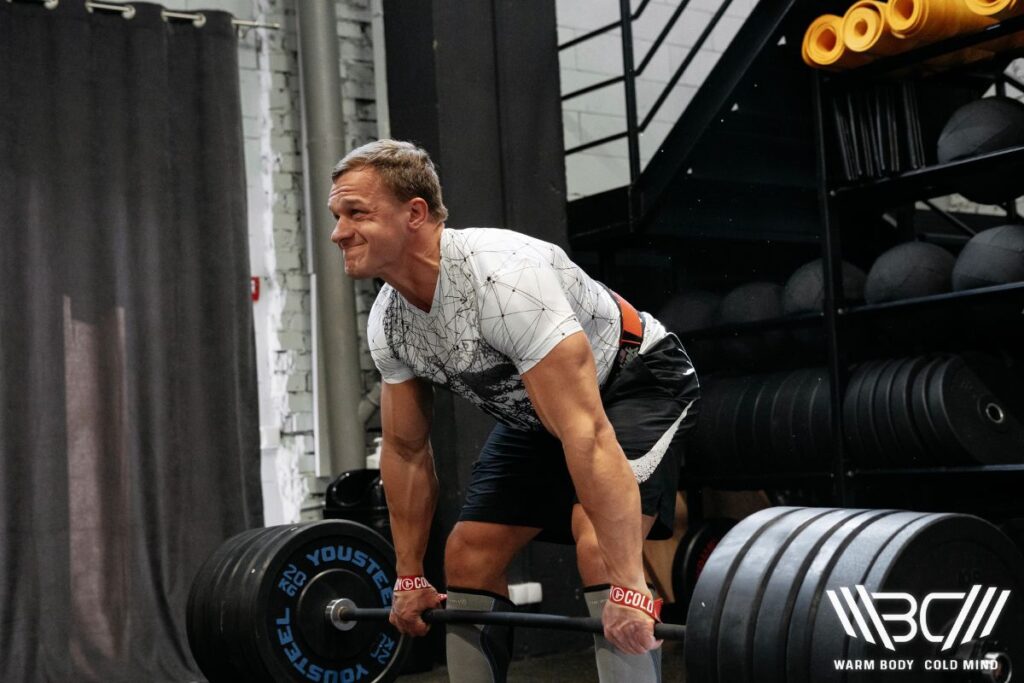
Not sure? Check the label, it should say something like “antibacterial/sanitizing, 70% (or more) alcohol”. More precisely, at least 80% ethanol or 75% isopropanol, according to the World Health Organization (WHO) standards.
After cleaning the ripped skin layer, place a sterile bandage or plaster. This may seem like an overreaction, but remember, you’re essentially dealing with an open wound. In almost all cases, it will heal itself in a few days, but It’s better to overreact now to avoid the doctor in the future.
2. Soak The Skin
Once you’re done exercising, the first step to dealing with weightlifting calluses is to wash your hands properly. Use lukewarm water, the recommended water temperature by most health organizations is around 100°F/38°C. This temperature is warm enough to stimulate blood flow and soften the skin, without drying it out. Gently rub the areas where calluses are forming to soften them down. Once your hands are nice and hydrated, you’re ready for the next step.

Maximize your lifts with Warm Body Cold Mind lifting tape, designed for the perfect hook grip.
3. File It Down
When a callus starts getting big, the threat that it unintentionally rips goes up. So, to avoid this, we simply need to file it down to make it smaller and smoothen out the skin. The simplest way to do this is by using a callus remover. You can get one at most drug stores or pharmacies, the basic ones are fairly inexpensive.
People also use a pumice stone — our female readers very likely have one as part of their general skin routine. They’re also available in most drug stores, pharmacies, beauty shops, etc. and they’re even cheaper than callus removers (on average). But, you have to be a little careful with them, as rubbing too hard can easily rip the callus wide open. Alternatively, some people use an old nail file or dull razor — new ones may be a tad bit sharp for this purpose.
4. Moisturize After
Once you’ve reduced your callus, finish off by applying some moisturizing cream. It will soothe and soften the skin and stimulate recovery. If you’re not sure which brand to get, check some online reviews or ask a pharmacist for a recommendation. Many moisturizer creams are made specifically to address dead skin cells, and some even are labeled “for calluses.” But remember, if you have a specific skin condition, always consult a dermatologist.
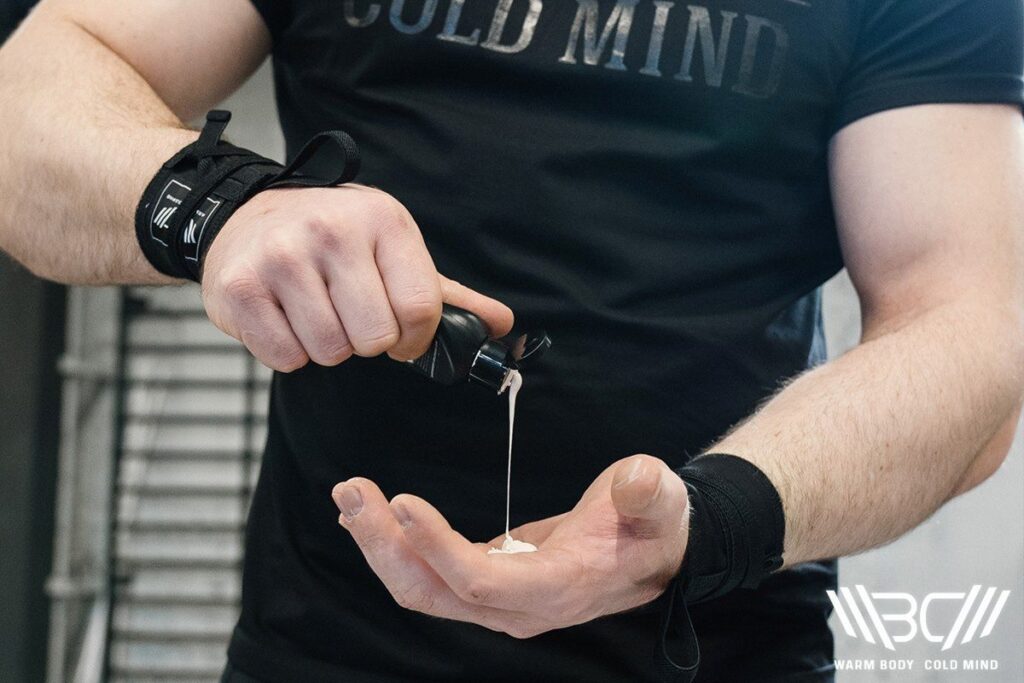
How To Do Weight Exercises With Calluses On Your Hands?
So far, we’ve established how to prevent calluses on hands from occurring. But what about working out with existing calluses? Here’s what you should know:
1. Leave Them Be
Getting a callus on a hand from working out is inevitable and not exclusive to weightlifters. If you do any type of exercise or physical activity that requires gripping onto an object or surface, you’ll encounter them. Some examples of other exercises where calluses are common include pull-ups, lateral pulldowns, and rows, but also something like rock climbing. Notably, research shows that as many as 69% of rowers have calluses most of the time and work out with them without issue.
2. Treat Them Accordingly
If you manage your calluses, exercising with them isn’t a big deal. In fact, embracing calluses is a natural way to make the outer layer of your skin stronger. Ever shook hands with a powerlifter? Have you left the thickness of their palm skin? That’s the result of thousands of micro-adaptations their skin has made over the years. Memorize our previous section on how to treat calluses on hands from weightlifting and with time you’ll get tougher skin too.
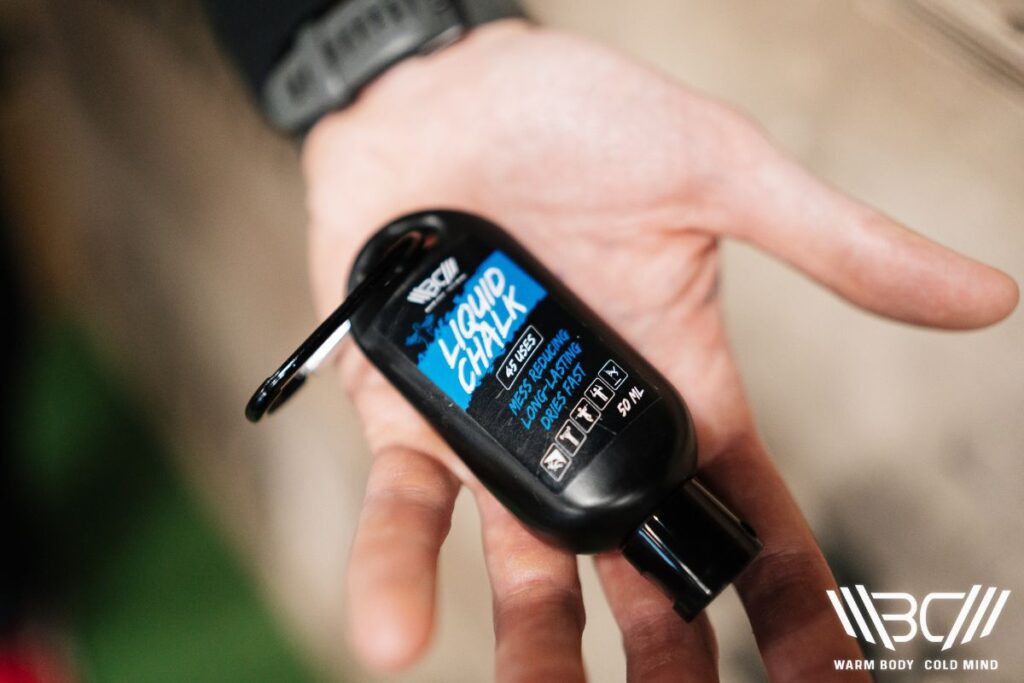
3. Experiment With Grip Types
Everyone’s hand anatomy is different. What works for you may not necessarily be the best option for someone else. There’s more than one way to grip a barbell, so experiment.
For example, many heavy lifters prefer the strength of the Hook Grip over the traditional grip. Importantly, this grip also reduces the contact of your index and middle finger directly on the knurling, which you might find more comfortable.
A Mixed grip is also a great way to minimize exercise pressure and shift it between hands when deadlifting. To perform it, simply grip underneath the bar with one hand. Some people also prefer thumbless gripping.
FAQ
How To Heal Weightlifting Calluses On Hands?
To deal with a painful callus on hand from weight lifting, start by washing your hands with lukewarm water. Use a callus remover or pumice stone to gently file down the calluses. Finish off with a layer of moisturizing hand cream.
Should You Moisturize Calluses?
Absolutely, moisturizing calluses will gradually soften the calluses. The American Academy of Dermatology Association recommends moisturizing calluses every day as a form of treatment.
Do Calluses Make Your Hands Stronger?
Yes, calluses form a protective layer against friction. By managing them properly, over time, you’ll naturally develop thicker skin.
Conclusion
Many people see getting a hand callus from gym day as a stamp of approval. After all, the only way to get it is by doing an intense workout. So don’t fear them, embrace them, but remember to manage them. Now that you know how to heal lifting calluses on hands, that shouldn’t be a problem.
We’d also like to hear from you. Have you experienced weightlifting calluses? If so, did you find them manageable or are you looking for solutions? Share your thoughts in the comments and remember to give us a follow on social media for more fitness content.
Also read:
References:
- “Blisters,” Cleveland Clinic https://my.clevelandclinic.org/health/diseases/16787-blisters (accessed Dec. 27, 2023)
- Denise B. Freeman, “Corns and calluses resulting from mechanical hyperkeratosis,” American Family Physician vol. 65, no. 11 (2002), 2277-2080.
- Fabiola Farci, Gauri D. Mahabal, “Hyperkeratosis,” StatPearls [Internet] (Treasure Island, Florida, StatPearls Publishing, 2023)
- Hani Yousef, Mandy Alhajj, Sandeep Sharma, “Anatomy, Skin (Integument), Epidermis,” StatPearls [Internet] (Treasure Island, Florida, StatPearls Publishing, 2023)
- “How to Use a Pumice Stone,” Healthline https://www.healthline.com/health/how-to-use-a-pumice-stone (accessed Dec. 27, 2023)
- Joseph N. Grima, Michelle Vella Wood, Nadia Portelli, James N. Grima-Cornish, Daphne Attard, Alfred Gatt, Cynthia Formosa, Dario Cerasola, “Blisters and Calluses from Rowing: Prevalence, Perceptions and Pain Tolerance,” Medicina (Kaunas) vol. 58, no. 1 (2023), 77
- Kyung-Min Lim, “Skin Epidermis and Barrier Function,” International Journal of Molecular Sciences vol. 22, no. 6 (2021), 3035
- “Proper Handwashing Fact Sheet,” New York State Division of Military and Naval Affairs https://dmna.ny.gov/foodservice/docs/toolbox/proper_handwashing.pdf (accessed Dec. 27, 2023)
- “WHO-recommended handrub formulations”, WHO Guidelines on Hand Hygiene in Health Care: First Global Patient Safety Challenge Clean Care Is Safer Care, (Geneva, World Health Organization, 2009)
Author: Sergii Putsov
PhD in Sport Science, Olympic weightlifting, Strength & Conditioning coach and fitness expert
Sergii Putsov is a professional weightlifter with over 20 years of experience and multiple national medals. He was a member of the National weightlifting team, competing in the 94 kg weight class. Sergii holds a master’s degree in Olympic & Professional Sport Training and a Ph.D. in Sport Science. After his athletic career, Sergii transitioned into coaching and is now responsible for designing training programs, writing blog articles, providing live commentary for international weightlifting competitions, and hosting sport and fitness seminars worldwide.

